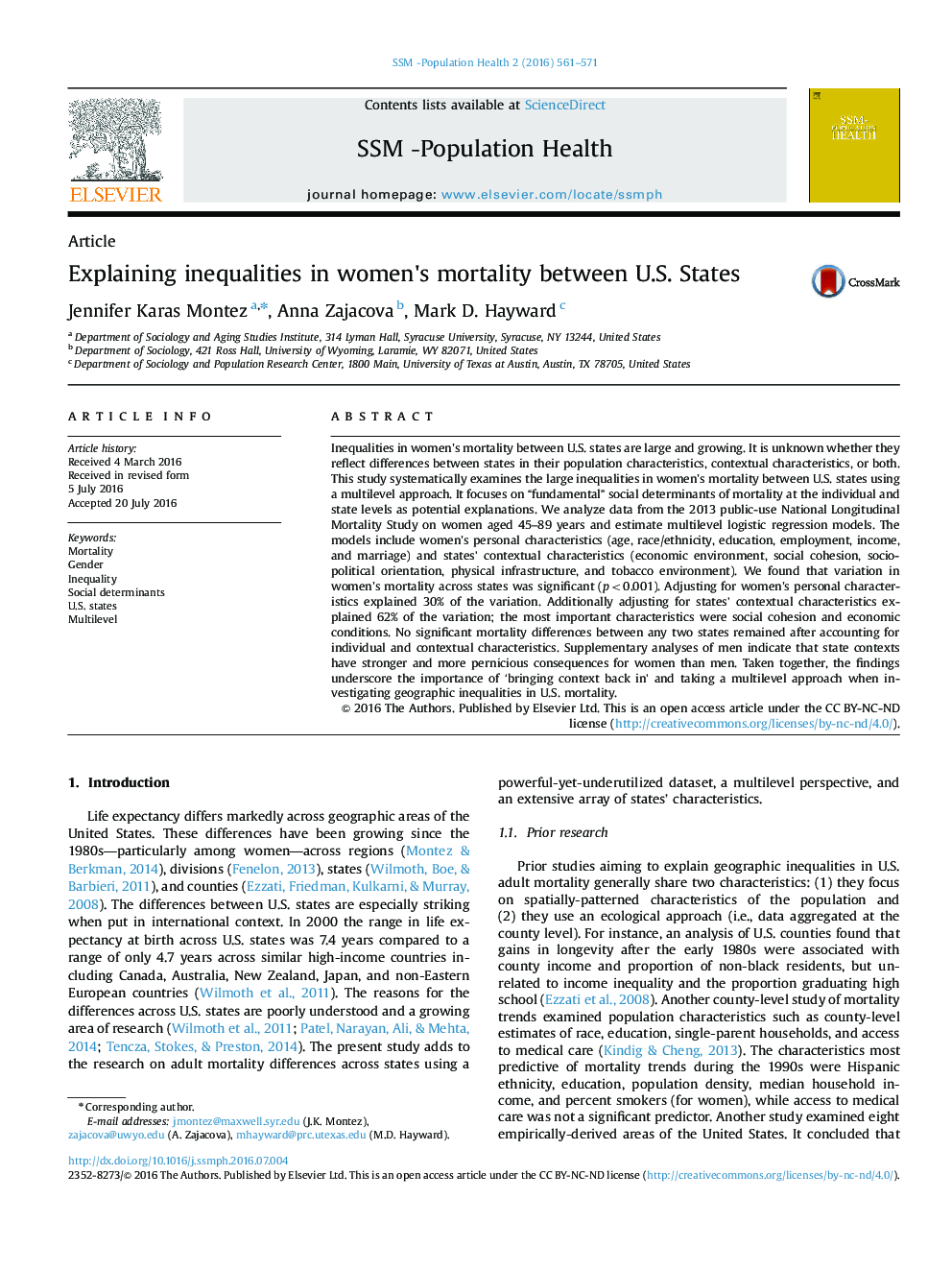| کد مقاله | کد نشریه | سال انتشار | مقاله انگلیسی | نسخه تمام متن |
|---|---|---|---|---|
| 1092364 | 1487260 | 2016 | 11 صفحه PDF | دانلود رایگان |
• Variation in adult women's mortality risk across U.S. states is significant.
• Differences in both women's and states’ characteristics account for the variation.
• Most important state characteristics are social cohesion and economic conditions.
• States may have stronger and more pernicious consequences for women than men.
Inequalities in women's mortality between U.S. states are large and growing. It is unknown whether they reflect differences between states in their population characteristics, contextual characteristics, or both. This study systematically examines the large inequalities in women's mortality between U.S. states using a multilevel approach. It focuses on “fundamental” social determinants of mortality at the individual and state levels as potential explanations. We analyze data from the 2013 public-use National Longitudinal Mortality Study on women aged 45–89 years and estimate multilevel logistic regression models. The models include women's personal characteristics (age, race/ethnicity, education, employment, income, and marriage) and states’ contextual characteristics (economic environment, social cohesion, sociopolitical orientation, physical infrastructure, and tobacco environment). We found that variation in women's mortality across states was significant (p<0.001). Adjusting for women's personal characteristics explained 30% of the variation. Additionally adjusting for states’ contextual characteristics explained 62% of the variation; the most important characteristics were social cohesion and economic conditions. No significant mortality differences between any two states remained after accounting for individual and contextual characteristics. Supplementary analyses of men indicate that state contexts have stronger and more pernicious consequences for women than men. Taken together, the findings underscore the importance of ‘bringing context back in’ and taking a multilevel approach when investigating geographic inequalities in U.S. mortality.
Journal: SSM - Population Health - Volume 2, December 2016, Pages 561–571
